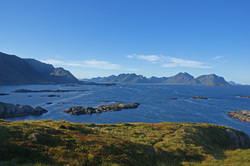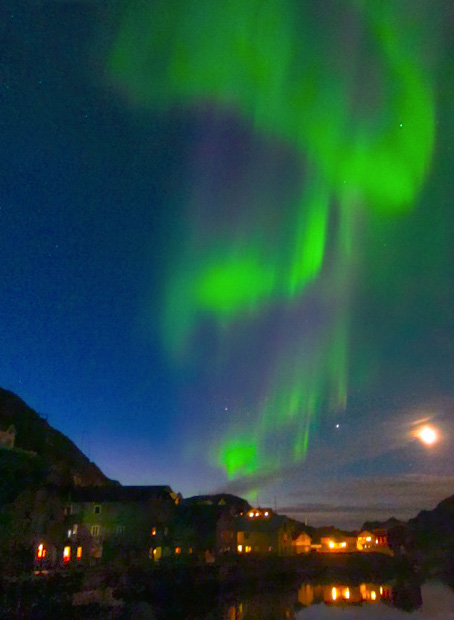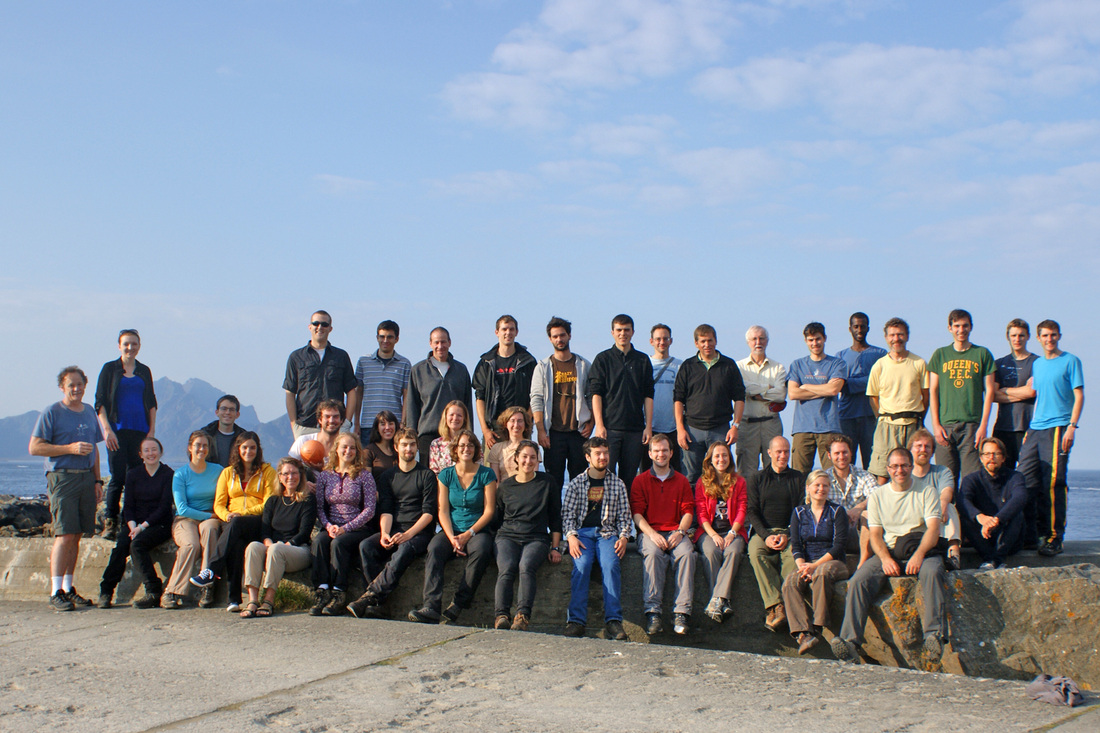 Contributing Author: Benoit S. Lecavalier August 18th, 2013 marked the start of a two week long workshop called the Advanced Climate Dynamics Course (ACDC). The venue was located in a former fishing village in the Vesterålen islands of Arctic Norway, a little place called Nyksund with a population of slightly over a dozen permanent residents. We were there for more than just hiking through the great outdoors, eating the local food, and performing local outreach. We were there to discuss what many call small talk: the climate. Organized by European and North American Universities, this event attracted internationally renowned researchers and graduate students, gathered there to discuss the climate dynamics of the last deglaciation. Twenty thousand years ago, during the last glacial maximum, the climate was cooler, the Greenland and Antarctic ice sheet were larger, and gargantuan bodies of ice rested across North America, the British Isles, and Scandinavia. Consequently, the sea-level was lower than it is today by over 120 meters. The emphasis of the workshop was to discuss how the climate system transitioned from glacial to present interglacial conditions. The seminars began by summarizing our present understanding of climate on time-scales of thousands of years. The driver, often referred to as the pacemaker for the ice ages, is the changes in the Earth’s orbit around the sun. These gradual changes in the Earth’s orbit affect incoming solar radiation at the Earth’s surface, which can either facilitate the growth of an ice sheet or deter it. However, countless feedbacks within the climate system render the situation complex. For example, ice sheet’s reflective nature deflects radiation back into space affecting the available energy at the surface. In addition ice sheets, which can rival mountain ranges in size, affect atmospheric jet streams and deflect storm tracks as well as precipitation patterns. To understand these feedbacks within the climate system we have to look at paleoclimate records: terrestrial and marine records of past climate. The following days were spent going over climate proxies, which preserve physical characteristics of past climatic conditions. These tell us about past temperatures on land and in the ocean, how vigorously the oceans circulated, and past sea-levels, among many other things. After being presented with collections of paleoclimate records, we could speculate on the role of the atmosphere and ocean during the deglaciation. The question that came came to mind: if the ice ages are driven by slow gradual changes in the Earth’s orbit around the sun, what processes, feedbacks, and mechanisms could punctuate the system with such abrupt and rapid climate change? We reviewed the literature to investigate the consensus on what is currently understood and what observations lack a proper explanation. Our review emphasized the necessary role of geophysical modeling of the climate system to understand how all these complex processes are intertwined. State-of-the-art atmosphere-ocean general circulation models tell us about the state of the atmosphere and ocean, while glacial system models reveal the response of ice sheet to past climate change and the resulting change in sea-level. Atmosphere-Ocean models are predominantly applied for the past and future 100 years, so the question remains: what were the climatic conditions over the ice sheets thousands of years ago? What climate forcing led to ice sheet instabilities, causing the flow of iceberg armadas in the North Atlantic? To which extent did the fresh water from these icebergs affect the circulation of the Ocean? How have these changes in circulation affected global heat transport and the carbon cycle? What about global temperatures? Fortunately, we are beginning to answer these questions thanks to international cross-disciplinary collaborations, which are often initiated by workshops such as the ACDC.
Many atmosphere-ocean modelers take an interest in simulating the deglacial climate, with help from the glaciological community who provide past ice sheet reconstructions. These scientists have discovered that massive ice sheets show the potential to deflect atmospheric stationary waves. The ice sheets respond to climatic shifts, and in warmer conditions they can change dynamically by releasing icebergs into the ocean. Fresh water melting from those icebergs produces density differences in the Atlantic Ocean which slows down the formation of heavy deep water, affecting global circulation. This change in ocean heat transport cools the North Atlantic, while the Southern Oceans warm in a compensating fashion. The models simulate these dramatic climate events, hinting at underlying mechanisms and illuminating the observations found in paleoclimate records. This goes a long way towards explaining how the Earth as a whole warmed out of the glaciation and why records in the North Atlantic reflect quick warming with subsequent rapid and prolonged cool period before finally stabilizing to present conditions. However, the story is far from understood, for every answer brings new questions. The workshop got everyone thinking about possible avenues of research which will have to be investigated to address our questions. That is why we gathered there in that little Norwegian village. It was to exchange ideas, data and model predictions, to work together and form collaborations, and to piece together a story that shaped humanity and still affects us today. |
Archives
March 2022
Categories
All
|



 RSS Feed
RSS Feed